Before the rules...
I propose to show you a visual of how the flow of a match of Flesh and Blood goes, so you can understand how your turn-by-turn is expected to be.
And so, of course, to explain how your turn goes, we have to start at the end of it.
What? What's the problem???
In Flesh and Blood, at the END of your turn, you'll draw up to your hand size, which is equal to your hero's Intellect stat, generally four. You're reading it correctly: you draw up at the end of your turn. Your opponent will, then, go to their turn, in which they will -- probably -- attack you, and that's when you'll have your first decision: block or take the damage.
Maybe you block with one or two of your four cards and your opponent ends their turn, again, by drawing four more cards. Not you, though... now you'll have your own turn, where you attack your opponent the hardest you can with the cards left in your hand, at which point the ball is on your opponent's court: take it or use cards to defend?
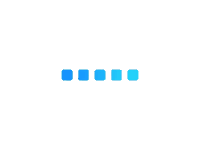
That's the general idea of a turn of Flesh and Blood. You defend and, with whatever's left, attack. In the process, maybe your opponent blocks all your offensive, but then he'll have no cards left to hit you with, and that's the "dance" you're gonna tango to, gaining small edges until you (or, preferably, your opponent) is forced to block with everything you have to not die, and someone falls.
Now that you understand the flow of the match, let's finally learn to play, shall we?
Preparing for battle
The first thing to do before a match of Flesh and Blood is present your hero to your opponent. There are multiple heroes in FAB, from the warriors like Dorinthea Ironsong and Kassai, Cintari Sellsword, mages like Kano, Dracai of Aether and Iyslander, brutes such as Levia, Shadowborn Abomination and Rhinar, Reckless Rampage, rangers like Lexi, Livewire, and many, many others.
To better learn about all the heroes (and villains) in the world of Rathe you can go (https://fabtcg.com/heroes/)(here) to the official website. There you'll find informations about the lore of each hero, as well as some core concepts and identities and some key cards for each of them.

In Flesh and Blood, you represent your hero in a fight to the death. Your deck is composed of their attacks, defenses and actions they can take in battle.
After presenting your hero, positioning them in the center of your board, and seeing your opponent's hero, you have to choose the equipments and weapons your hero will use in battle. That's correct: before the game starts, you can choose equipments that will better serve you against a specific opponent.

This can mean equipping your hero with a Nullrune Robe to better deal with the arcane damage from Kano, or a Stalagmite, Bastion of Isenloft and a one-handed weapon like Titan's Fist to play in a more defensive fashion with Oldhim. If it's your first time playing, don't worry too much about it, just choose some equipments and hop in the arena!
After choosing your suite of equpment and weapons, put them face-down on the indicated zones for each of them. Your opponent should do the same, and then both heroes shuffle and present their decks to the opponent to cut. Decide in a random fashion who get's to choose to play first or second and draw cards from your deck equal to your hero's Intellect, indicated by the blue symbol in the bottom left corner of your hero card.
The life points of your hero are located in the bottom right corner of their card. Have some way to mark life totals, and know that someone will only claim victory once their opponents are at 0.
And, again, welcome to Flesh and Blood. Action time.
Getting into the Action
Action Points
All the fun in a Flesh and Blood match happens in the Action Phase of each hero's turn. That's when you can attack with the powerful attacks in your deck, or your weapon, and also where you'll have to defend your opponent's attacks.

At the beginning of your Action Phase, you'll receive an Action Point. Every time you play an Action Card or use an ability with the word Action in its cost, you'll have to pay 1 Action Point. This represents the time and effort necessary to take the action, and acts as a limit to how much you're able to accomplish in one turn. If you don't have any action points remaining, you can't play or activate any Action, so, choose wisely!
Go Again
Many Action Cards and action abilities in Flesh and Blood have Go Again written on them. When an Action with Go Again resolves, you'll gain back 1 Action Point. This represents faster actions, and let you use multiple actions during a single turn.

There are many examples of cards that have Go Again, and Go Again can be present in both actions that are not attacks, like on Emerging Power (1) or Tome of the Arknight, and attack actions or weapons: Breakneck Battery (1), Leg Tap (1), Harmonized Kodachi. Bigger attacks, such as Buckling Blow (1) or Pack Hunt (2) don't have Go Again.
During your turns, it'll be important to sequence your actions with and without Go Again correctly. For example, you should use your Oath of the Arknight (2) before attacking with your Nebula Blade, since the weapon attack does not have Go Again. You should use your Warrior's Valor (3) and Sharpen Steel (1) before attacking with your Dawnblade. It's important to note that different sources of Go Again from a single action will not give you back multiple Action Points.
Actions, abilities and their costs
We talked about Action Points and cards with Go Again, but how exactly do we play and activate an action?

First of all, notice that the card type is on the bottom center of the card.
Heartened Cross Strap is a Generic Equipment, meaning it can be used as a Chest piece for any class (since its Generic, get it?); its activation cost reads Action -- Destroy Heartened Cross Strap:, that is, it will cost you an Action Points and requires you to destroy the equipment to be activated. However, since it also has Go Again written after the ability's effect, it will return to you once the effect resolves.
Raging Onslaught (2) is a Generic Action, meaning it can be played in any class, and beyond that, it is an Attack Action Card, meaning it will cost you an Action Point to be played, and it has no Go Again.
Awakening Bellow (3) is a Brute Action, meaning it can only be played by Brute heroes. Being an Action Card, it will also cost you an Action Point, which will be refunded on resolution because of the Go Again written on the card.
Many abilities in Flesh and Blood have, as part of their activation cost, resources that need to be paid to grant their effects, and the same is true for cards. To activate abilities and play cards, you need to pay the indicated cost on the ability or on the top left corner of the card. As an example, activating Heartened Cross Strap requires no resources, but you need to destroy the equipment. Raging Onslaught (2) requires 3 resources to be played, and Awakening Bellow (3) requires 1 resource.
But how do we even generate resources? Good question!
Generating Resources
All cards in Flesh and Blood, save extremely specific exceptions, can be used to generate resources.
The most common way to generate resources is pitching a card. To pitch a card put it, from your hand, into the Pitch Zone, located on the side of your deck.

Every card has a specific amount of resources they generate when pitched. The amount of resources you generate when pitching a card is indicated on the top right corner of each card.
For example, Breakneck Battery (1) generate 1 resource when pitched, Bloodrush Bellow generates 2 resources, and Glint the Quicksilver generates 3 resources.
Many cards in Flesh and Blood have more than one "version" of the same card. In reality, there are cards with the same name, but different attributed. These cards are considered different cards for the purposes of the game and deckbuilding. For example, Breakneck Battery (1) pitches for 1 resource and has 6 power, while [card]Breakneck Battery (2)) pitches for 2 resources and has 5 power, and Breakneck Battery (3) pitches for 3 and has 4 power.
This game mechanism leds to very interesting considerations for deck construction, since the red versions of those cards (referring to the strip above the card names for cards that pitch for 1) are more powerful when played than their yellow or blue counterparts, but without a balance between cards of every pitch color strip your deck can suffer with resource generation.
You can only pitch a card to pay for a resource cost. In other words, you can't pitch a card without a purpose.

But what happens to the cards you pitch? At the end of every turn, you can reorder all cards you pitched for that turn in any way you want, and then you put all pitched cards at the bottom of your deck.
This means that, if the match goes on for long enough, you'll start to see the cards you pitched during the game once again.
The ability to pitch mindfully, with a good balance between blue and red cards (which, as we've seen, are different in their power level) is what differentiates a good Flesh and Blood player from a great Flesh and Blood player. That being said, don't quite worry about that for now if you're just beginning to learn the game!
How to Attack and Defend
Attacks are the body and soul of a Flesh and Blood match. Be it with Attack Action cards or the ability of a weapon, you'll have to attack your opponent if you want to win.
When an Attack Action is played or activated, you should put it on the Combat Chain, located above your hero card. The Combat Chain is composed of Chain Links. Every time an attack is made in sequence, meaning no non-attack actions were played/activated between them, a new Chain Link is created.
Every attack has a specific attack value, shown by the yellow spear icon on the bottom right corner of a card or weapon.

Specific effects can increase your decrease the power of an attack as written on the card, as is the example of Blackout Kick (1), a ninja Combo finisher, or can have different types of on-hit effects, which are effects that happen when your attack deals damage to a hero on the Damage Step of combat. So, how do we exactly resolve an attack?
After an attack is declared, it's time for your opponent to defend. To do that, they can choose as many cards or equipments as they want and declare them as defending. Almost all Flesh and Blood cards can be used to defend, and it is not necessary to pay the cost of a card to defend with it.
For example, Snatch (1) is an attack, however, it has a defense value of 2, indicated on the bottom right of the card. Barraging Beatdown (2) defends for 3, and Ironrot Gauntlet can be used to defend for 1 once during the game.
Attack and Defense Reactions
After the opponent is done declaring defenses, the Reaction Phase begin. The attacking player is the first to have priority, being able to use Attack Reactions to modify their attacks. Attack Reactions are powerful because they can be played after your opponent has finished declaring defenses and can't add more defending cards from hand. Razor Reflex (1), for example, can increase the power of an attack by 3 and even give Go Again to an attack that previously didn't have it.

Independent of an Attack Reaction being played or not, now its time for your opponent to use reactions. Defense Reactions can be used by the defending player during the Reaction Step to further increase their defense. Differently from defending with any other card type, to defend with a Defense Reaction you need to play and, thus, pay the costs of the card/ability. Defense reactions are more versatile defense cards that can be used after declaring normal defenses.
For example, Sink Below (1) is a Defense Reaction that defends for 4, and its cost is 0. In this case, you don't require to pitch to pay its cost to defend with it, while Staunch Response (3) or Unmovable (1) requires the player to pay 2 or 3 resources, respectively, to defend with them.
Dealing Damage
After the Reaction Step we proceed to the Damage Step. An attack causes damage to the opponent equal to the difference between its power and the sum of your opponent's defenses. Some attacks have additional effects that happen if the attack deals damage this way in on-hit effects.
For example, if you're being attack by a Spinal Crush and defend it with a Surging Strike (2) and Nimblism (1), if no defense reactions are played, you'll end up taking 5 points of damage. The Crush clause on Spinal Crush will then resolve, making you unable to gain back Action Points from your cards with Go Again. No doubt a big hit to the back.

There are many other examples of on-hit effects that can be extremely powerful, such as Snatch (1) drawing a card if it hits, a Steelblade Supremacy making your weapon attacks draw a card, or a Pummel (1) played on an Attack Action card of cost 2 or greater making your opponent discard a card. In its essence, Flesh and Blood is a game that functions around on-hit effects.
Making Another Attack
After the Damage Step we enter the Resolution Step. During the Resolution Step, the Go Again from your attack reemburses you the Action Point you spent to attack with it. After that, if you still have an Action Point left, you can continue your turn as you wish.
If another attack is made right after a previous attack, a new Chain Link is created, with all the phases we just went through again. The opponent will, then, have a chance to defend themselves, then there's another Reaction Step, and finally the damage and resolution step, and so on. The Combat Chain is not closed if multiple attacks are made in sequence. If an action that is not an Attack Action is activated or played, the Combat Chain closes itself, and all attacking cards, defenses and reactions go to their owner's graveyard, and the defending equipments return to their respective zones on the board.

Ninjas in Flesh and Blood, for example, benefit greatly from sequencing different attacks in specific orders.
For reference, these are the combat steps that happen with each and every attack:
Attack > Defense > Reactions > Damage > Resolution
Using your Arsenal
When you have no more Action Points, its probably time to end your turn. Before passing to your opponent, if you still have a card in hand and your Arsenal Zone is empty, you may put a card from your hand face down into your Arsenal. Using your Arsenal well is a big part of Flesh and Blood.
Cards in your Arsenal can be played as if they were in your hand normally. They CAN'T, however, be used as pitch or to defend, unless they're Defense Reactions. Think of your Arsenal as a way to stock a card for the future, making it easier to execute combos and synergies with the other cards in your deck without having to rely on naturally drawing them together in the same hand.

It is important to remember that at the end of the FIRST TURN in the game, both players draw up to their hero's Intellect. This serves to balance out the advantage of being the first to act, and, generally, means that attacks on the first turn can be defended freely. If you're the first to play, use your first turn to make an Arsenal, granting your access to more cards in the future!
Ending your Turn
After choosing if you will or not make an Arsenal, you draw cards from your deck up to your hero's Intellect, and then your opponent's turn starts. Since your hand will always be filled up at the end of your turn, it's very important to use all cards your given for your turns, as to use the "free" draw up effectively.
Tips to Start Well in FAB
Do you only have one attack you can make during your turn? Try to defend with the cards that won't be used as pitch, and, whenever possible, Arsenal an important card for future use. Don't have a strong attack to play on your turn? Use your cards to block the offensive of your opponent and while attacking with weapon or just making an Arsenal on your turn!
It's hard to overstate how important blocking is in Flesh and Blood. Even more aggressive decks need to block to different extents. The golden rule, which will start to make more and more sense the more you play is:
“Block the above average hands from your opponent with your below average hands.”
- The Golden Rule
Obviously, knowing what hands are above and below average is the hard part of that statement, and will only come with time, but if I could give a simple heuristic, it would be: the sum of your block + damage presented should be, at least, 13. This means that if without blocking you're presenting less than 13 damage, it will probably be correct to block something!

Know the "power turns" from your deck. In other words, know which combinations of 2 or more cards are especially important for your game plan, and try to Arsenal one of those pieces while you wait for the others. With specific 2 or more card combos, it is possible to present more than 20 damage in a single turn!
Use the block value from your equipments well! Using your Ironrot Gauntlet to stop 1 damage may let you in a rough spot when a Snatch (1) appears on the table and you need to block with two cards instead of a 3-block card and that gauntlet. In general, the later you let your equipments available for blocking, the better value you'll get from them.

Use your weapon! Most weapons in the game can attack (I'm sorry, Rangers and Illusionists), and being able to use your weapon when the alternative is attacking with a blue card makes a world of difference.
An Example Guided Turn
Let's walk through a typical Flesh and Blood turn with the help of our friend Andre, playing Katsu, already in the middle of a match.
Start of Turn Procedure
At the start of their turn, Andre checks if there are any triggered effects. In his case, putting a counter on his Fyendal's Spring Tunic. Never forget your Tunic Counter.
Andre, then, adjusts his tunic counters from 2 to 3 energy counters, allowing him access to 1

In his Arsenal, the specific zone located below his hero, there's a face down Flying Kick (1). Cards in your Arsenal can be played normally, and are put there at the end of your turn to be used in the future.
Attacking with a Weapon
As with any turn in Flesh and Blood, Andre only has a single Action Point. But, as we'll see, that's not a problem for a Ninja like Katsu.
After the start of turn procedure, Andre starts his Action Phase, the phase where the active player can play their actions. Andre, then, attacks with one of his two Harmonized Kodachi for 1 damage, paying the resource cost of 1



The opponent then chooses to defend with nothing. During the Reaction Step no player does anything, and then, Beatrice, playing Bravo, takes 1 damage, going to 15
Attack Reactions and defending with equipments
Andre's Harmonized Kodachi has Go Again because of its effect, as the pitched Flic Flak (3) has a cost of 0. Andre then attacks with his second Harmonized Kodachi, paying 1
This time, Beatrice decides to defend with their Ironrot Gauntlet for 1


Beatrice's Ironrot Gauntlet stays on the Combat Chain, marking that is has been used to to block Andre's Kodachi attack.
Attack Action cards and defending with cards
Since Andre did not close the Combat Chain by playing/activating a non-attack action, their next attack, a Leg Tap (1) which is paid for with the floating resource he had left over, will be the 3rd Chain Link in this Combat Chain.
Beatrice decides to defend with a Disable (3) for 3

Resolving "on-hit" effects
Since an Attack Action card hit Beatrice, Andre has a chance to use Katsu's effect. Moreover, Andre's Mask of Momentum has its effect clause satisfied, which will also trigger an effect.
Since both effects happen from the same trigger, an attack hitting an opponent, Andre can choose the order in which the effects happen, and he chooses to first draw a card off of Mask of Momentum, drawing a Head Jab (3).
Andre, then, chooses to use his hero's effect, paying its cost by discard the Head Jab (3) he just drew, searching up for a [card]Rising Knee Thrust (1)) and banishing it. Now, Andre's has only a Rising Knee Thrust (3), with the red version of the card in banish, and a Flying Kick (1) in Arsenal.
Using Defense Reactions
Andre, smartly, attacks for the fourth time with a Rising Knee Thrust (1) from the Banished Zone, paying no resources, and with the Combo clause active, as the last Chain Link was a Leg Tap (1).
The Rising Knee Thrust (1) is coming in for 5
Beatrice chooses to defend the attack by playing a Defense Reaction, Staunch Response (3) for 5



Using the Arsenal
To end it with a bang, Andre plays his Flying Kick (1) from Arsenal, paying its cost by pitching the last card in his hand, the Rising Knee Thrust (3), and floating 1
As the Flying Kick (1) is the fifth Chain Link, it comes in for 7

Ending the Turn
Andre's Flying Kick (1) doesn't have Go Again, and so, Andre has consumed his Action Point for the game, and can't play or activate any more Actions.
If Andre still had a card in hand by the end of his turn, and if his Arsenal was empty, he could place a card face down into his Arsenal, which could be used in the future. As it is, Andre simply passes the turn, drawing 4 cards, which is Katsu's 
Now its Your Turn!
Now you know everything you need to know to play your first match of Flesh and Blood. I, sincerely, hope you enjoy it. FAB is a beautiful game where every match, and I repeat, every match there's something new to learn by the end of the game.

For a personal anecdote, for my first 10 matches, coming from MTG and thinking it would be easy, I had no idea what I was doing, and ended up — internally — thinking that the game was somewhat... random, but only a few more matches in and I started appreciating how intriguing and dense the game is.
After the initial learning hump, the matches started to make sense. I could see a back and forth happening: sometimes I had all the initiative, making my opponent block with 3 cards from their hand, and a few turns later, after a few weapon swings, I saw myself being forced to block more and more, which made my initiative slowly slip away into my opponent's court.
Every match of Flesh and Blood is memorable. It's not uncommon that both heroes end up at 1 life for multiple turns, exchanging blows and defending for as much as possible until one of the heroes finally gets ahead of the trading and can finally end the match. It's addicting.

One more time, welcome to Flesh and Blood, and may your hands always be balanced and your Arsenal never empty!

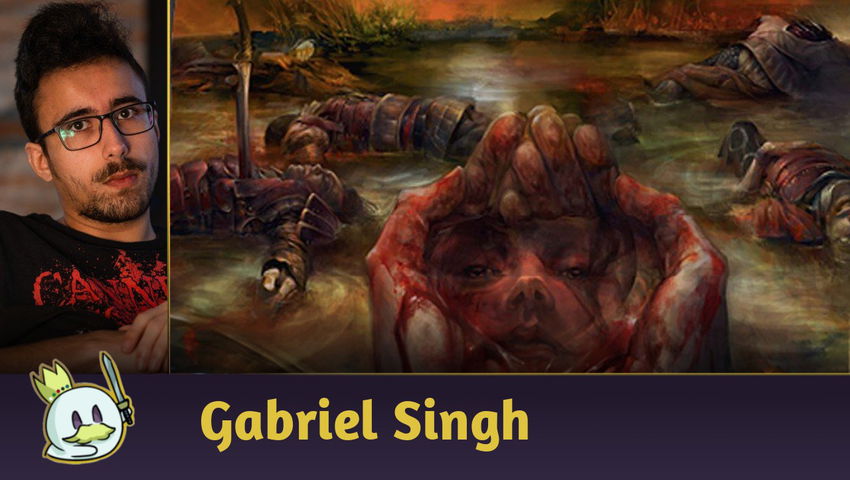






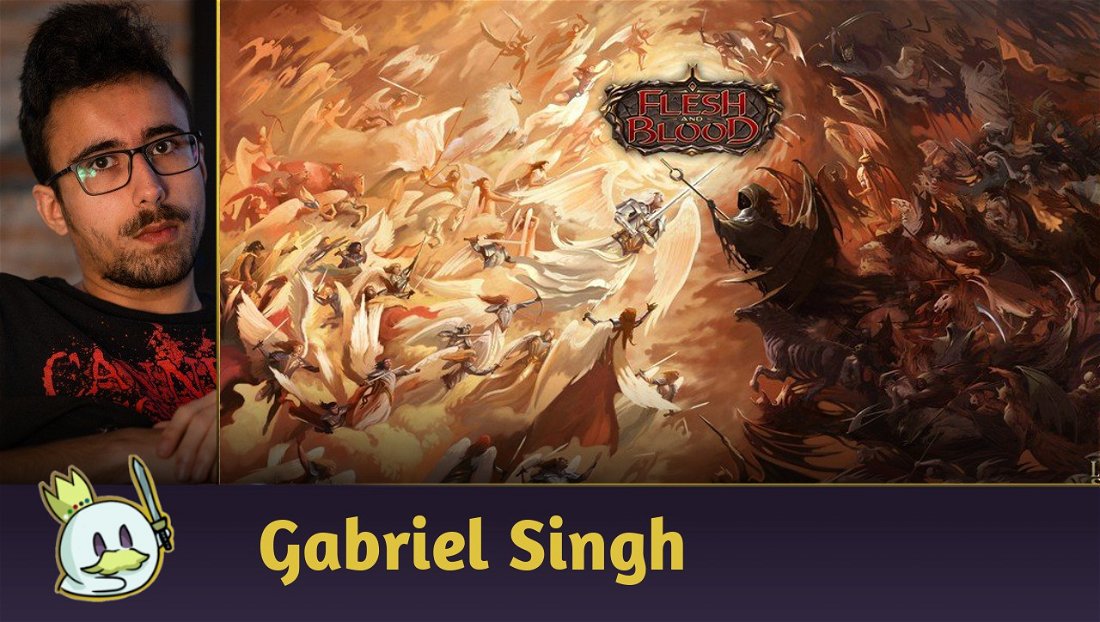
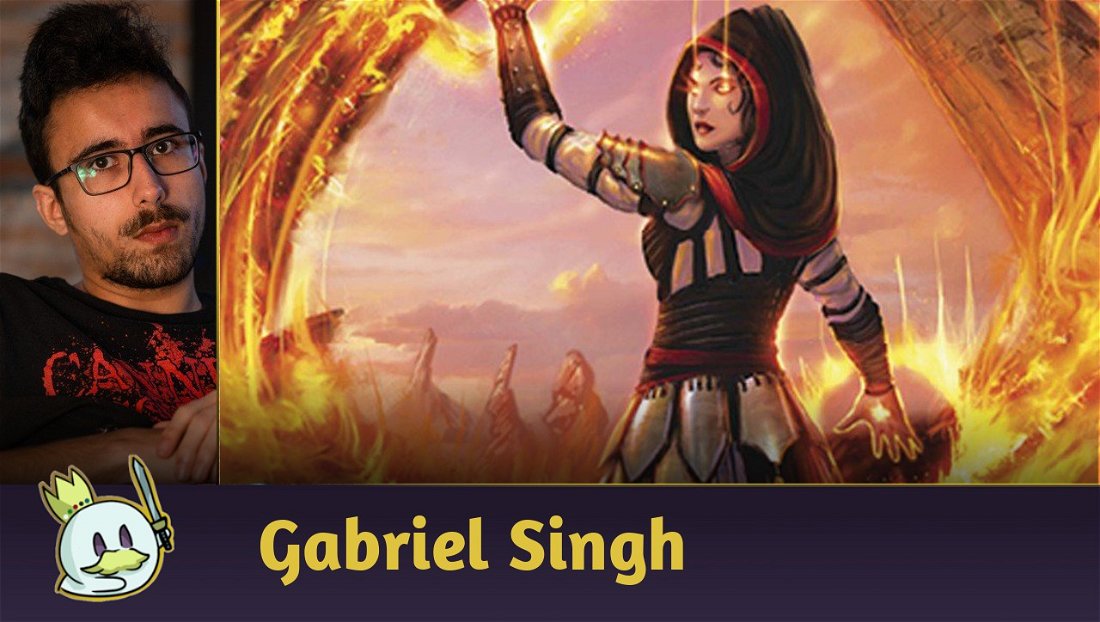

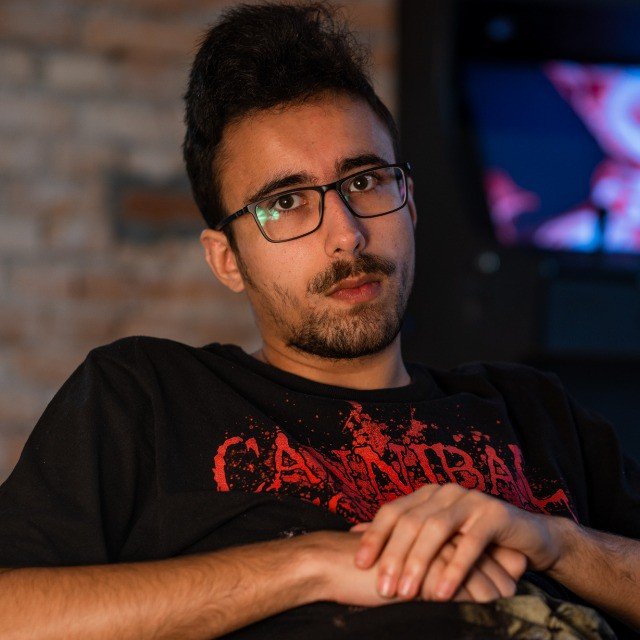
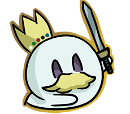
— Comments 0
, Reactions 1
Be the first to comment